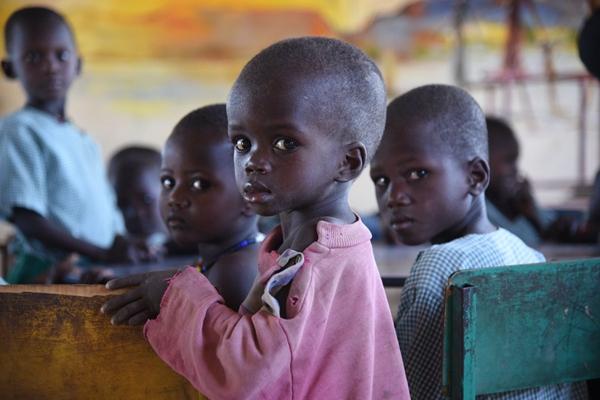
A malnourished child joins pupils at St. Andrew's Nutrition Center in Nayanaekabaran, Turkana County, Kenya, on Oct. 12, 2022. [Photo/Xinhua]
The United
Nations Children's Fund is calling for action to guarantee the right of children in Africa to live in a safe and healthy environment.
This follows a report published by UNICEF on Friday indicating that children in the continent face extraordinarily high climate change-related hazards and risks. The report's publication came in the runup to the Africa Climate Summit, due to open in Nairobi on Monday.
Despite the risks, the report said, children are neglected in climate financing that could help them adapt to, survive and respond to the climate crisis. Only 2.4 percent of global climate funding targets children, it said.
The report, "Time to Act: African Children in the Climate Change Spotlight", said children in 48 out of 49 African countries assessed are categorized as at high or extremely high risk of the impacts of climate change.
The analysis assesses countries based on children's exposure to climate and environmental shocks, such as cyclones and heat waves, as well as their vulnerability to those shocks, based on their access to essential services.
"It is clear that the youngest members of African society are bearing the brunt of the harsh effects of climate change," said Lieke van de Wiel, deputy director at the UNICEF eastern and southern Africa region.
Stronger funding
"They are the least able to cope, due to physiological vulnerability and poor access to essential social services. We need to see a stronger focus of funding toward this group, so that they are equipped to face a lifetime of climate-induced disruptions."
Children living in the Central African Republic, Chad, Guinea, Guinea-Bissau, Nigeria and Somalia are the most at risk, the report said.
Kitka Goyol, a UNICEF climate, water and sanitation expert, said children and communities in northern Africa tend to be exposed to higher risks related to water scarcity and air pollution.
Children living in western and eastern Africa are heavily affected by the risks posed by vector-borne diseases, heat waves and riverine flooding.
"The risks to soil and water pollution affect children across the continent," Goyol said.
While countries have made substantial progress over the past 10 years in increasing access to health, nutrition, water, sanitation and hygiene as well as education and social protection, the vulnerability of children to climate change is heightened by inadequate access to essential services, he said.
Thirty-five percent of households in sub-Saharan Africa lack access to basic drinking water, Goyol said, while in western Africa two out of five, or 42 million, primary and secondary school-age children are out of school.
"In the continent at large, only an estimated 10 percent of children are covered by social protection interventions."




